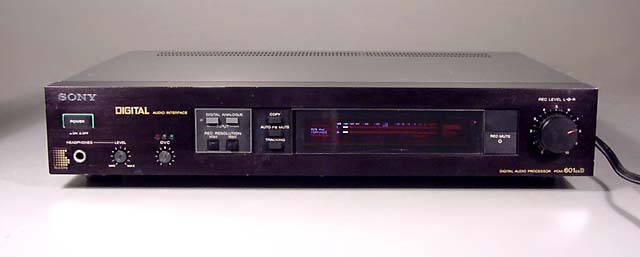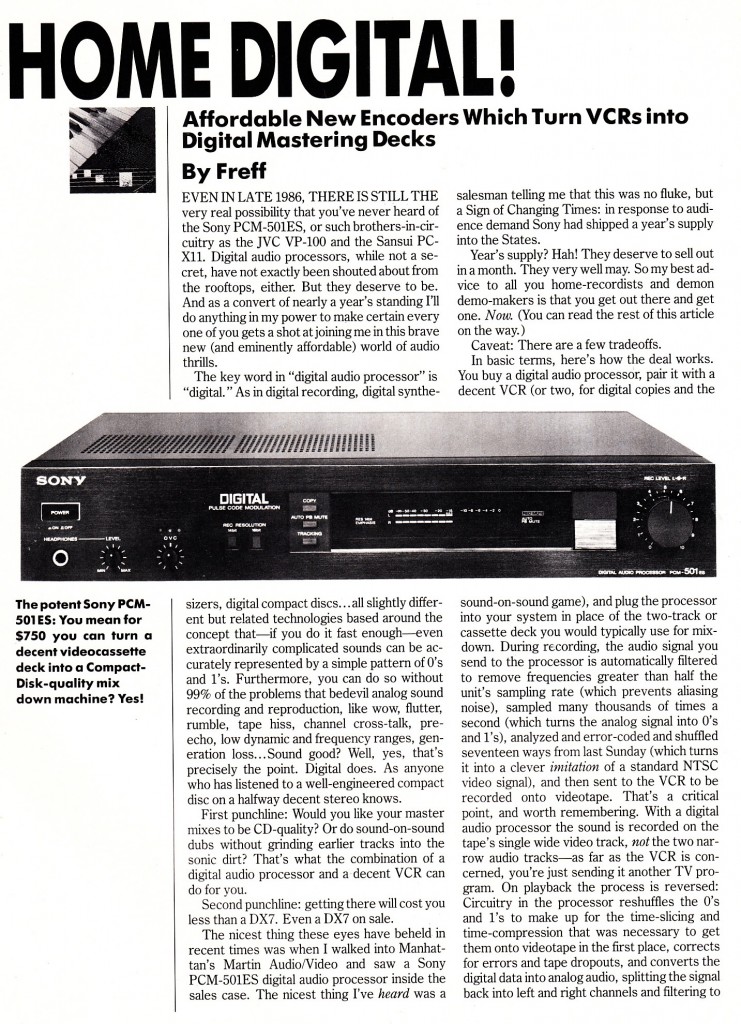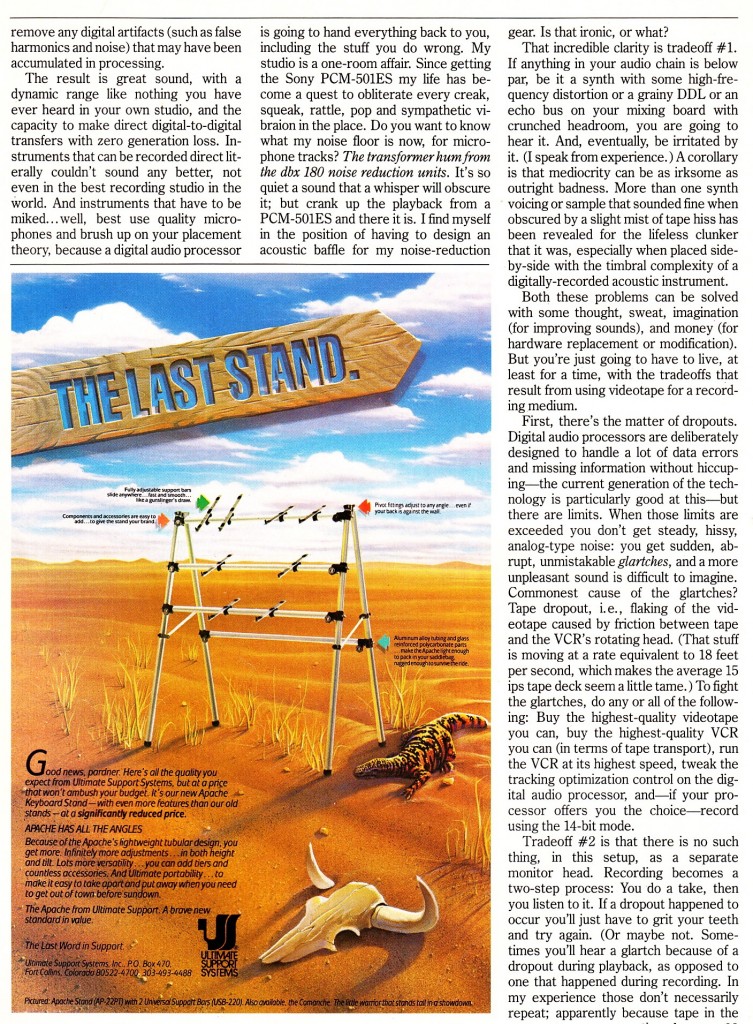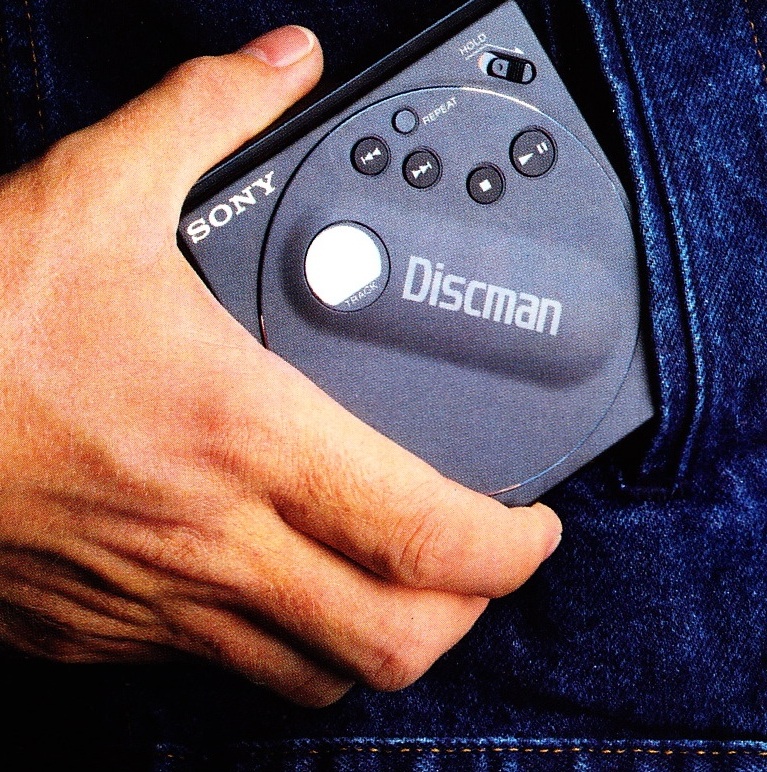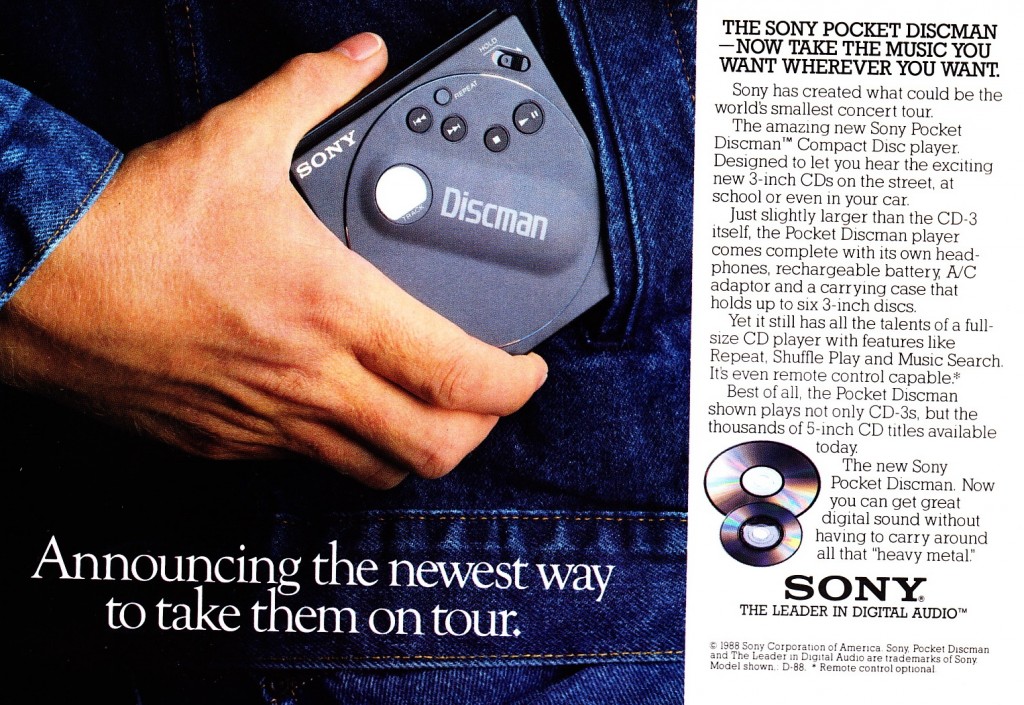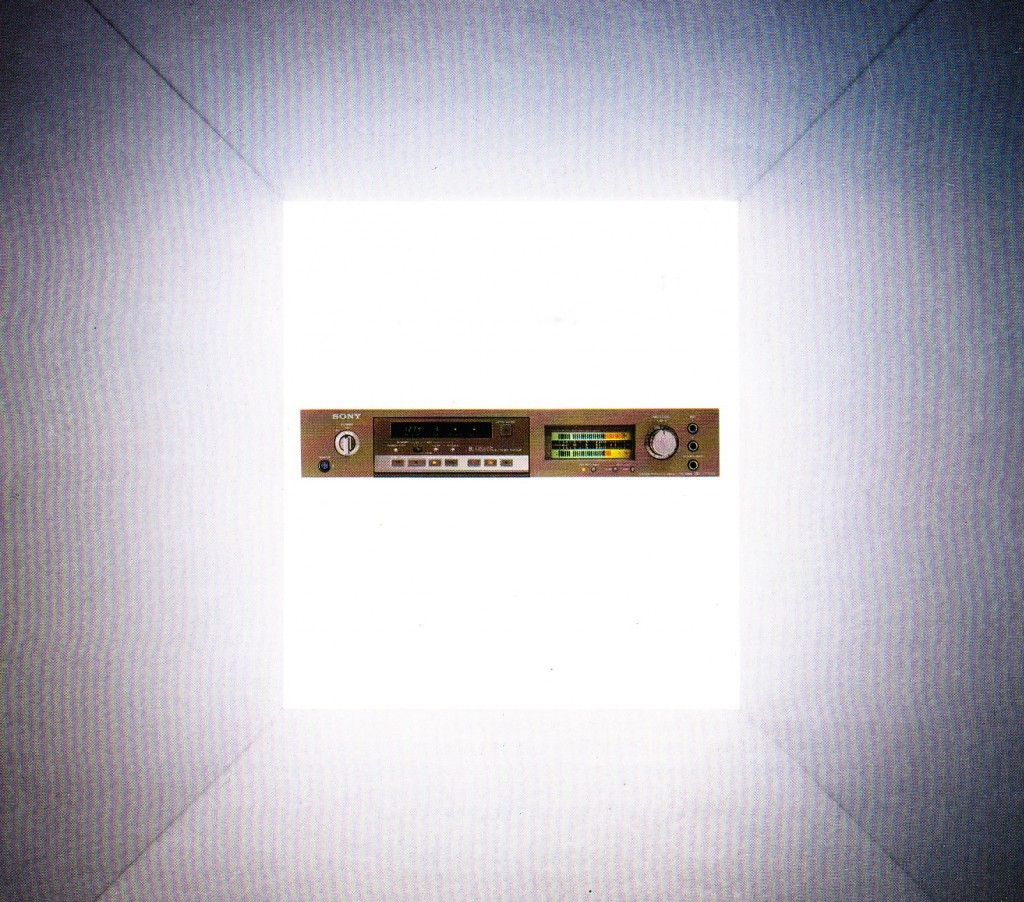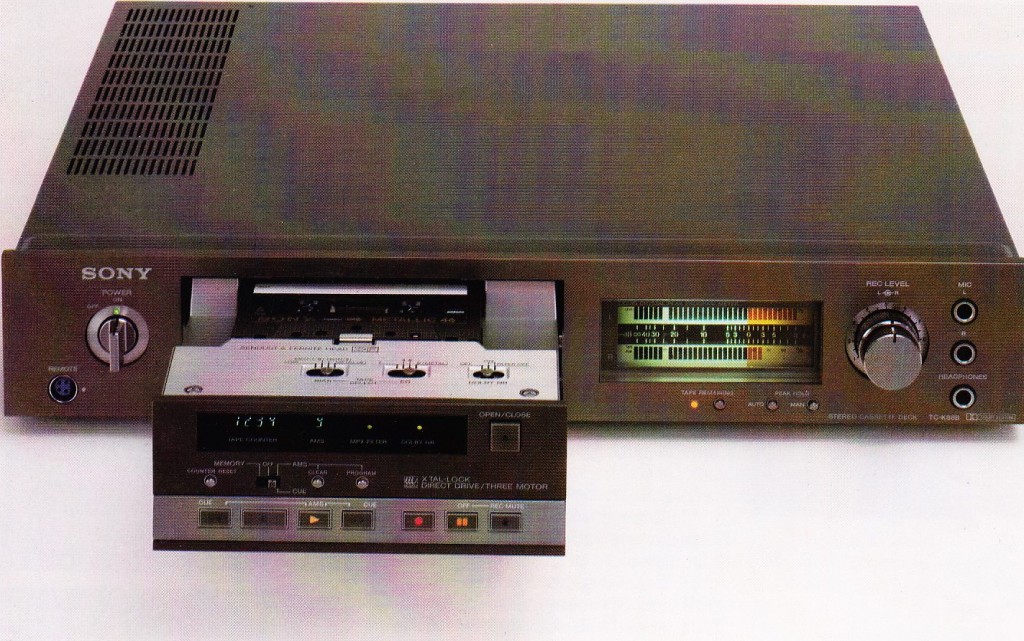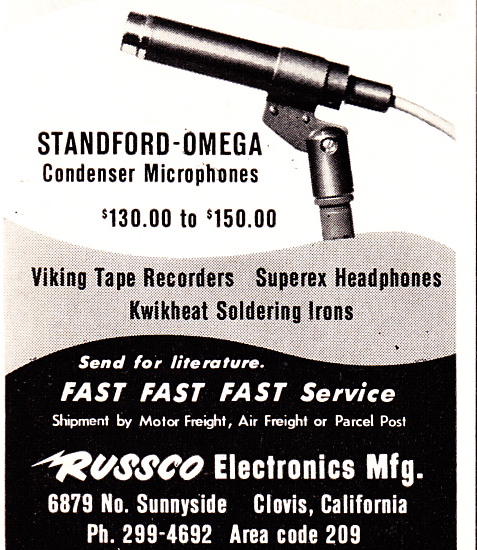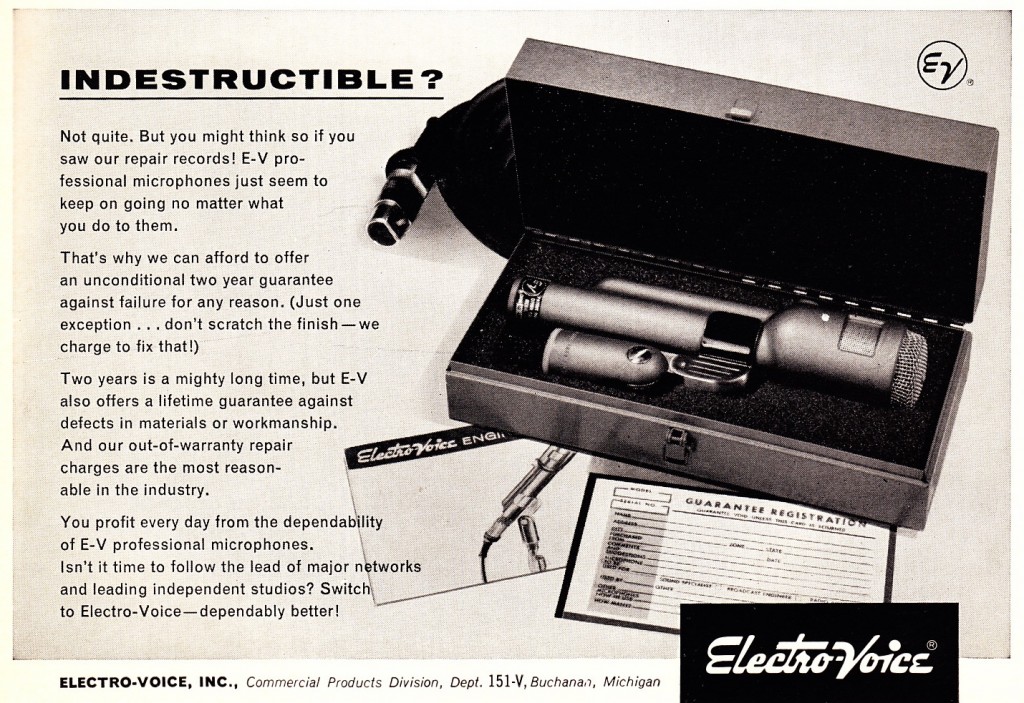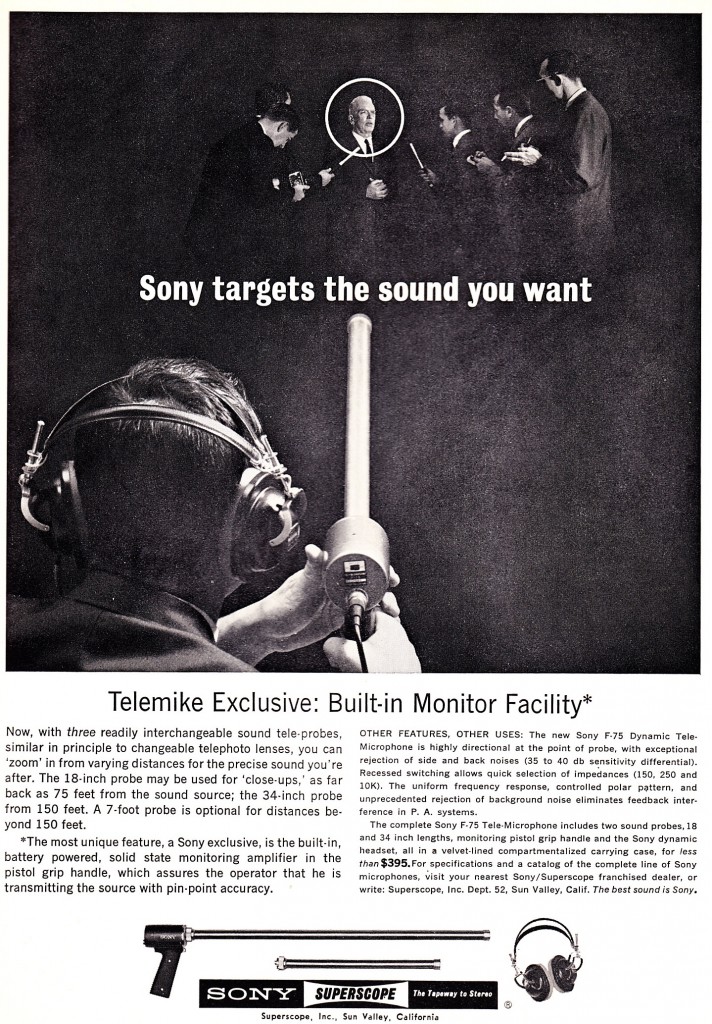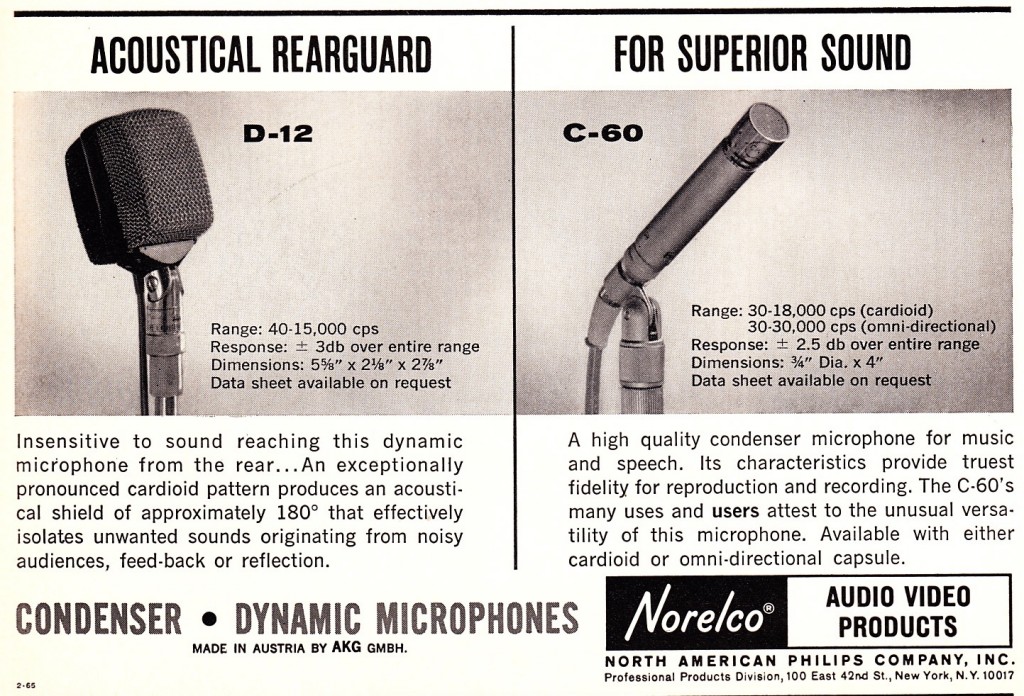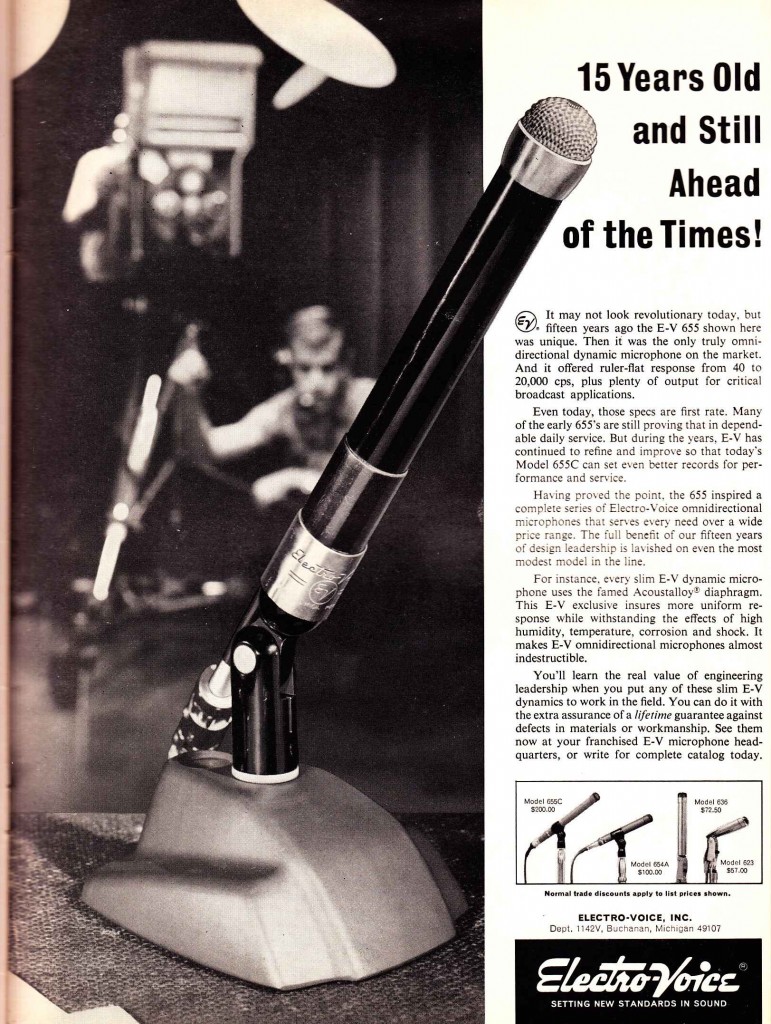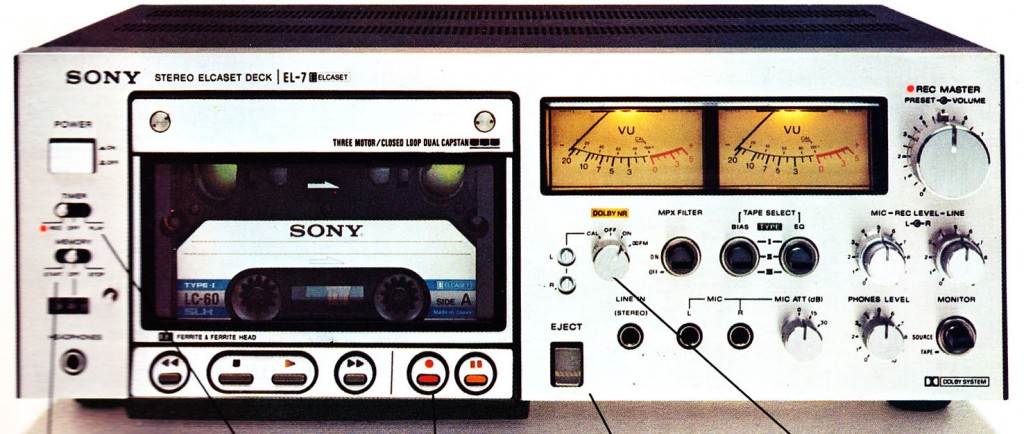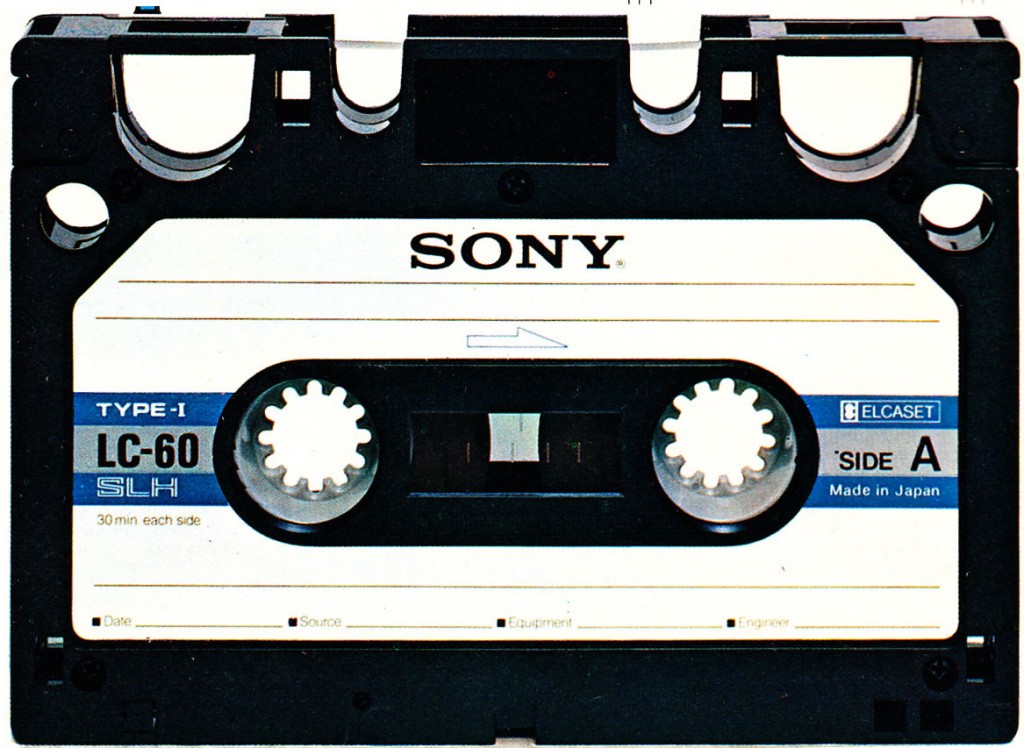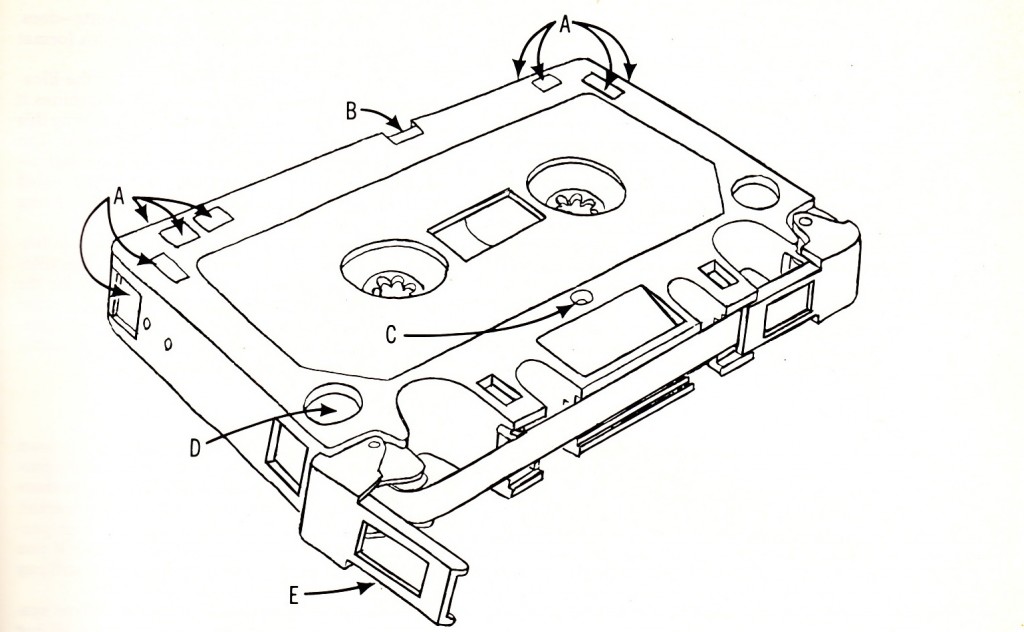As a kid, before the DAT deck was available, I vaguely remember talk about ‘so and so mixes his music digitally to a VCR’ and this just sounded like some black magic to me. Well, as it turns out, this was done via a reasonably affordable series of SONY devices, the base model of which was the 501 ES. The 501 ES was a duplex AD/DA convertor that could covert stereo analog audio to a single PCM stream that was then sent out as a video-bandwidth signal, to be recorded as single video signal on any VCR deck. There were some real drawbacks, such as a 1/2 sample interchannel delay, and apparently it worked best in 14 bit, rather than 16 bit mode? But none-the-less, this was a ‘real thing’ and back in those days, DIGITAL WAS BETTER and any way that you could GET DIGITAL was pretty much embraced.
Now, SONY actually marketed this technology as early as 1978, but at that point it was extremely expensive and beyond the reach of a small studio or musician. We ran an article on that first machine, the SONY PCM-1, a long while back. You can read it at this link. The PCM 501-es was much more of a prosumer product, though, so it managed to achieve much wider use. I found a great article from a 1986 issue of MUSICIAN mag which explains, in great detail, operation of the 501ES. It is by a person or persons named FREFF, and I reproduce it below for your edification.
